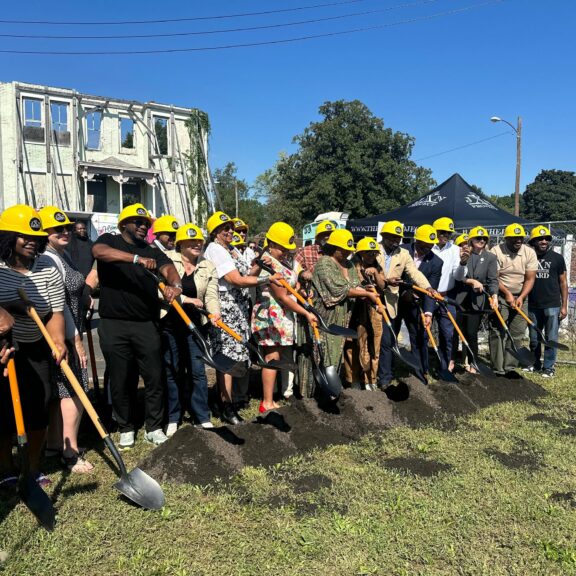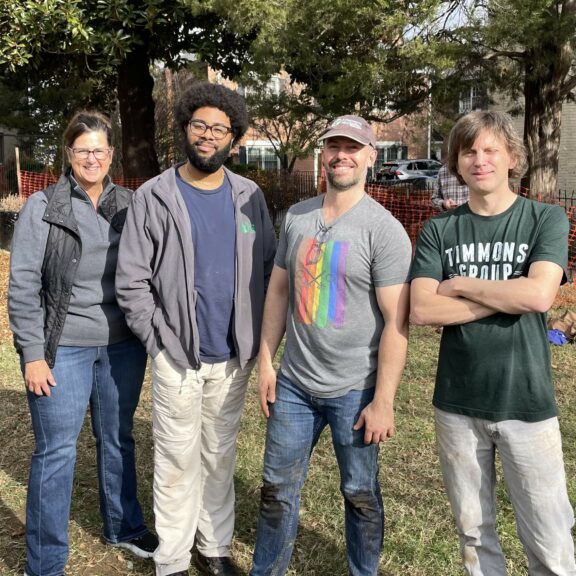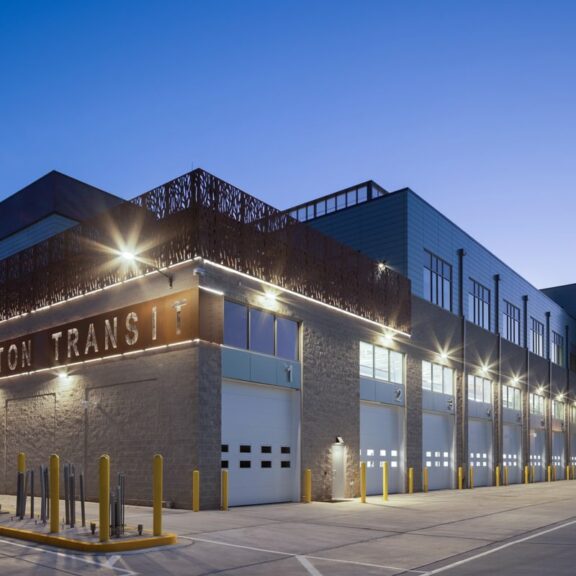The James River has long been the lifeblood of Richmond, Virginia. Flowing through the heart of the city, it has shaped its history, culture, and community, providing recreation, natural beauty, and vital resources. Now, the James A. Buzzard River Education Center is poised to deepen Richmond’s connection to the river. This state-of-the-art facility not only honors the legacy of Jim Buzzard, former chair of the James River Association (JRA) board of directors, but also reinforces a vision for a thriving James River that supports education, conservation, and community engagement.
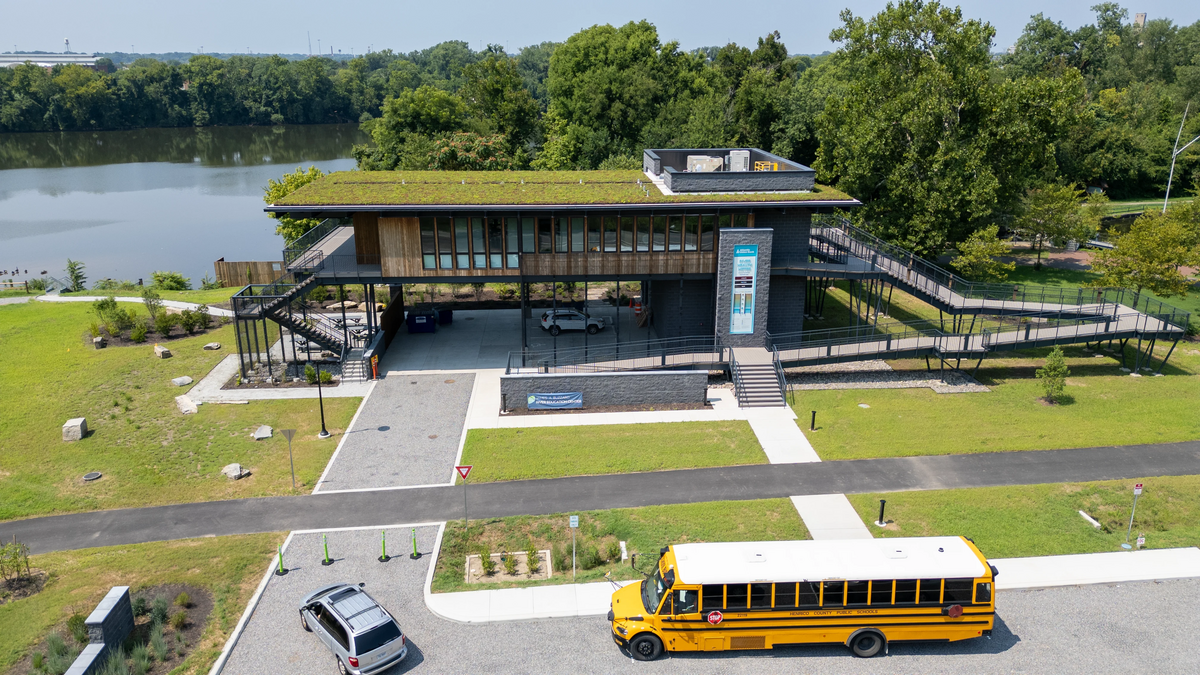
An aerial view of the new James A. Buzzard River Education Center features a living green roof, the Capital Bike Trail, and bus loop.
The James A. Buzzard River Education Center, which opened in summer 2024, is located on a 5-acre site just outside downtown Richmond. The center is set to become a premier hub for river-based education, strengthening the connection between students, the community, and the James River. The 8,900 SF facility includes flexible indoor and outdoor classroom spaces designed for school field trips of 45 to 60 students, as well as education staff offices. It reflects the JRA’s vision of a thriving community enriched by water activities, conservation, and environmental stewardship.
Strategically located in Richmond’s historically underserved East End, the center provides much-needed river access. Surrounded by woods, tidal waters, conservation landscaping, and historic features, the site offers an ideal setting for environmental education and deepening Richmond’s love of its James River. The new river center’s design includes 5,000 SF of indoor space, an additional 5,000 SF of covered outdoor space for various activities, and a 2,300 SF ramp system featuring a map of the James River system. It includes two indoor classrooms and two covered outdoor educational spaces designed to accommodate around 60 students in year-round programs.
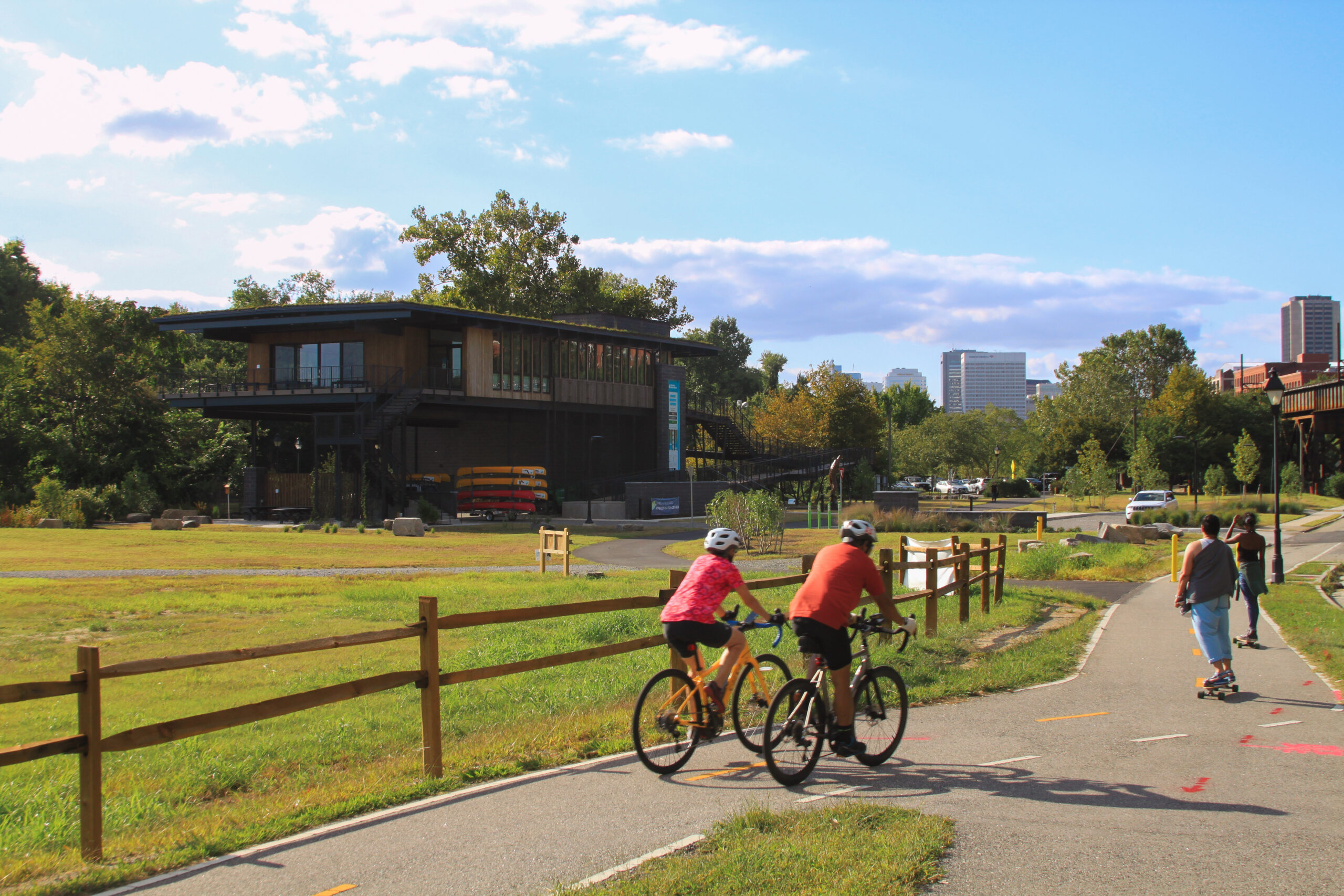
The Capital Bike Trail weaves its way in front of the new facility. Its path was relocated and renovated to incorporate JRA’s vision.
Built above the 100-year flood level, the facility will exceed both the City of Richmond Floodplain Ordinance and the Virginia Flood Risk Management Standard. Located along Dock Street, this prime riverfront site offers convenient access to central Richmond. Its protected waters are ideal for paddle craft programs, and the nearby dock will provide opportunities for “floating classroom” experiences, immersing students in hands-on, nature-based learning.
The 5.2-acre site, formerly known as the USP-Echo Harbor Site, had been fenced off and inaccessible to the public for years. In 2021, the James River Association worked alongside the Capital Region Land Conservancy and The Conservation Fund to purchase the property and place it in a conservation easement. This designation ensures that the site is protected from future development, and the JRA building’s uses are limited to education programming and related events.
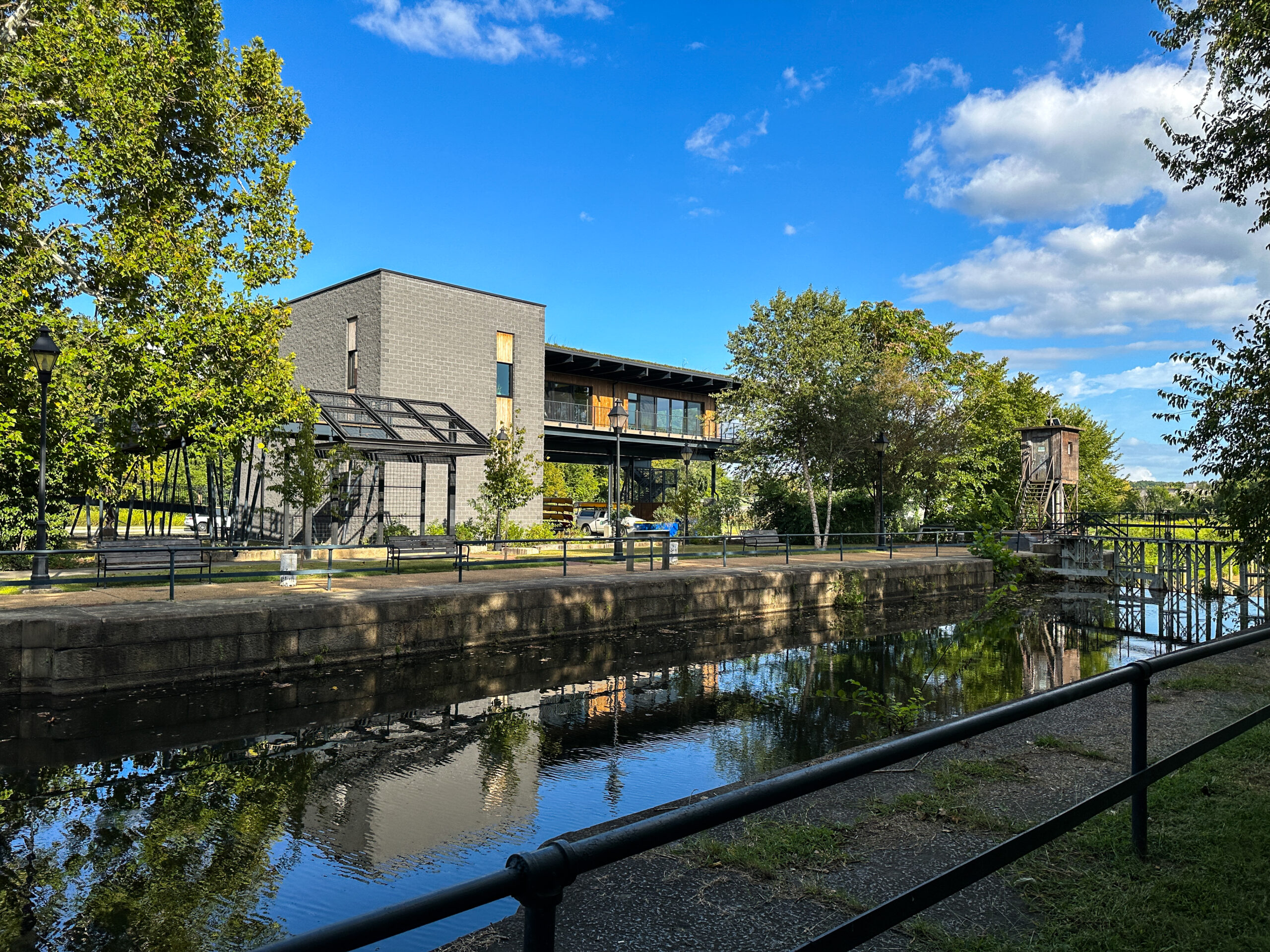
A view from the back of the facility shows the JRA’s vision of using the river as an education tool that is available just right outside.
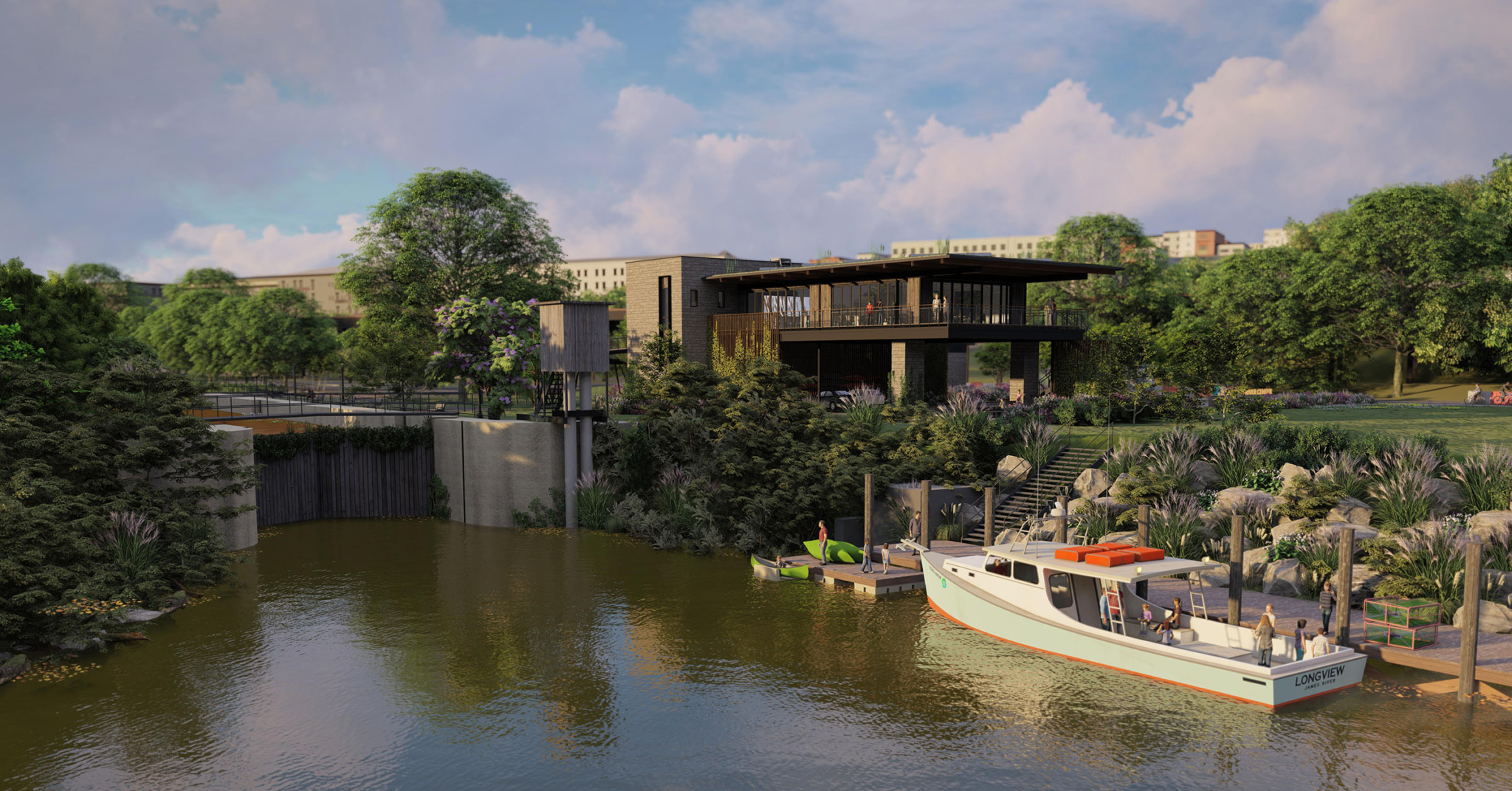
A rendering shows the back of the JRA facility and its dock, which will be accessed for educational tours on the river.
Site development was undertaken with a clear focus on community engagement. During the design process, a series of surveys and engagement meetings were held to solicit community input and define needs beyond those of the James River Association. Key goals were:
- Relocation of the Capital Trail off Dock Street.
- Maintaining the continuity of public space between Shiplock Park and the new City Park.
- Commitment to allow public access across the JRA property, including access to the ramp for public views of the canal.
- On-site parking to avoid burdening the already overstressed Shiplock Park parking lot.
- Aligning with the City of Richmond Riverfront Plan and Richmond 300 to ensure continuity of river access.
- Supporting the Richmond Equity Agenda by expanding out-of-school learning opportunities for youth about the history, natural resources, and conservation of the James River and the James River Park System.

JRA CEO Bill Street and U.S. Senator Tim Kaine show off their “James Changer” swag while posing with Scoot, the JRA’s Atlantic Sturgeon mascot.
The building’s design faced several challenges, including floodplain considerations, utility easements, and Chesapeake Bay Act restrictions. Elevated out of the 100-year floodplain, the project incorporates sea level rise considerations and uses flood-resistant materials to protect the building from the anticipated flood elevation in 50 years. Daylighting, deep overhangs for sun protection, durable materials, and large openings to maximize natural ventilation all contribute to a responsible, sustainable structure.
The James River is central to Richmond’s identity, and the James A. Buzzard River Education Center will play a pivotal role in protecting and celebrating this vital resource. By fostering environmental stewardship and providing equitable access to nature-based education, the center will empower the next generation to value and sustain the James River for years to come. Through its thoughtful design, community-centered approach, and commitment to sustainability, the Buzzard Center stands as a testament to Richmond’s enduring relationship with the James River.

